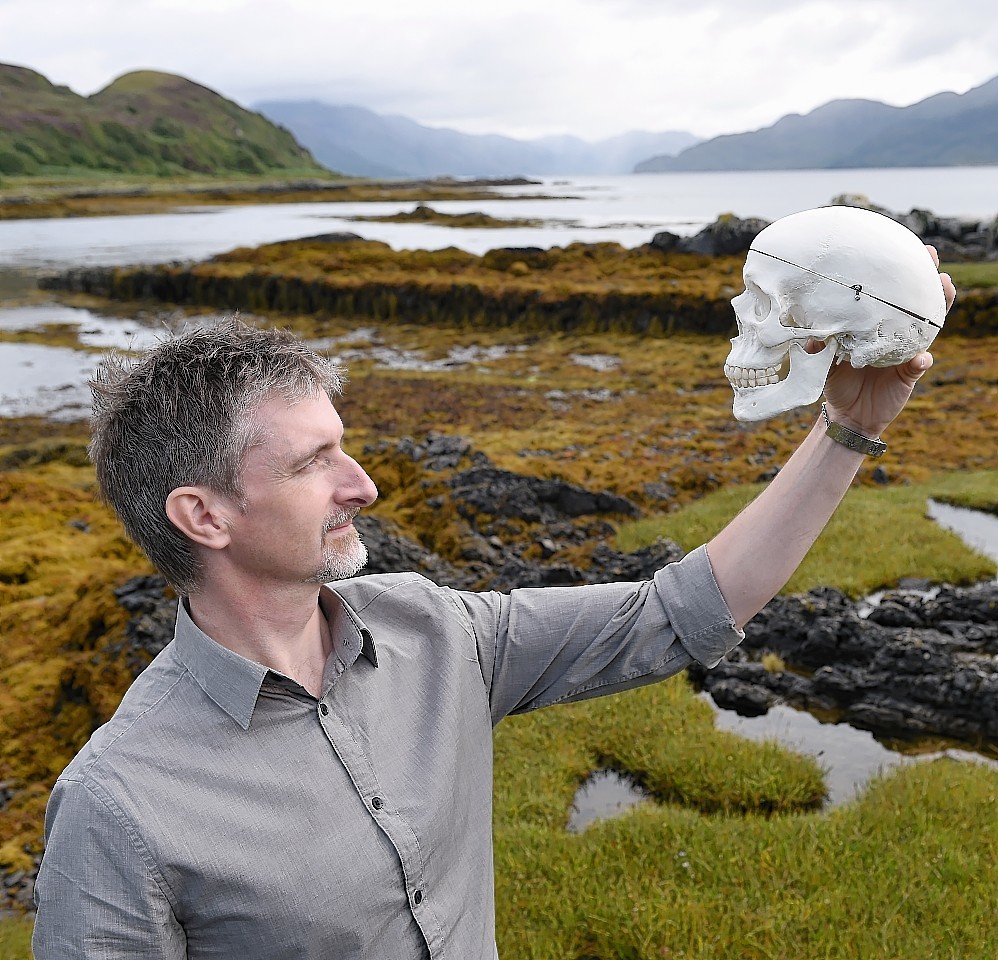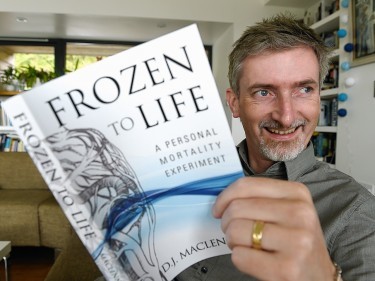Susan Welsh meets a remarkable Skye man willing to pay £50,000 to have his head removed and cryogenically preserved after his death
Donald John MacLennan from Skye is 44 and has already planned his funeral. He’s not ill and doesn’t want to die young – but he does want to be decapitated.
If Donald John, known to all as DJ, hasn’t found a means to escape the constraints of his natural lifespan, he will, upon his death, have his head cut off and preserved in a vat of liquid nitrogen in the Arizona desert.
His tale is similar to one heard on the other side of the world recently, where the parents of a toddler from Thailand who died from a brain tumour had her body cryogenically preserved in the hope that she may live again one day.
To most, it may sound like the stuff of Frankenstein-style nightmares, but to DJ, a talented and level-headed businessman, it all makes perfect sense.
“I’ve been interested in computers since I was a young boy growing up on Raasay and increasingly I became interested in the parallels between computers and brains. There are some but they’re not as straightforward as people tend to think,” said DJ, who is married to Sarah.
“I also began thinking a lot about consciousness and how that works. I was quite a fearful kid and as a child I worried about dying and found the subject of death quite disturbing. I was inquisitive and began asking questions such as ‘Does death have to happen? Can’t anything be done?’”
He says he found an answer in an article about Alcor – The Alcor Life Extension Foundation, an Arizona-based organisation regarded as a world leader in matters relation to cryonics, the science of using ultra-cold temperature to preserve human life with the intent of restoring good health when technology becomes available to do so.
For years stories have circulated that Walt Disney had his body cryogenically frozen.
“That’s an urban legend and didn’t happen,” said DJ. “There are a few hundred people who have been cryo-preserved but Walt Disney isn’t one of them. I think the rumour came from a flippant remark made by someone in his office and it became this big urban myth.”
But just as hard to believe is that a regular chap from Camus Cross, a hamlet in southern Skye, who lives in a modern house and enjoys foraging for seafood on the shore in front of his house, sea swimming, mindfulness meditation and the odd dram or two, would be willing to spend £50 a month on an insurance policy which, upon his death, would pay the £50,000 bill to have his head cut off and stored in a deep freeze on the other side of the world.
HOW IT WORKS
“When I found out about what Alcor does I thought it was fascinating,” said DJ. “They don’t make any promises and are very clear that all they are providing is another way of your body being handled after you’re dead, really.
“In legal terms it’s like donating your body to science. You have to sign lots of legal documents relating to it being an anatomical donation.
“I don’t have any spiritualistic notions of any kind. It’s just pretty clear to me that the
self emerges from the architecture of the brain and so that’s the important part to preserve. I’m donating all of my head, not just the brain, because in technical terms it would be harder to extract the brain for preservation rather than the whole head.
“You can have your whole body preserved, which costs much more money, but I don’t see the point as it’s the brain that’s the important part.”
Alcor has a very sophisticated way of dealing with the preservation of bodies and heads, says DJ. They don’t freeze them in the traditional sense, but use a process called vitrification, which is a technical process involving cooling in a way that avoids ice crystals forming and thereby prevents cell damage.
“For those living near the Alcor facility in Arizona, a stand-by team would be sent out at the point you’re pronounced brain dead. The body is placed in an ice bath and anti-coagulants are pumped around the body using a system called a thumper, which keeps your chest compressions going and allows the blood to circulate. Once stabilised, your body is taken to Alcor’s facility and all further procedures, such as the decapitation, would happen there, such as having the blood drained out of the head and replaced with cryo-protectant chemicals, rather like medical anti-freeze.”
Since becoming a “cryonaut” DJ has worn a bracelet advising the medical world of his wishes, in case, for example, he was to be involved in an accident.
“The bracelet has information and an emergency number so, hopefully, someone would contact Alcor and get advice from them. What any medical team would do is be encouraged to stabilise my body and get it to a cooler location and try to work out from then what is to be done.
“It’s extremely technically challenging, particularly if something happened to me now, as I live in an isolated location at the south end
of Skye.
“When you pass away, you want to be close by Alcor’s facility in the States but perhaps by the time my time comes, there will be another facility in Europe – I think this thing is going to spread so we’ll see more cryonic facilities being
set up.
“The head transplant is something I think will happen, in a limited fashion, sooner rather than later. There’s an Italian surgeon talking about doing the first human head transplant within years rather than decades.
“There’s also futuristic scenarios such as mind uploading, creating effectively digital brains where the structure of the brain is copied into the equivalent in computer algorithms, so you essentially have a virtual version of yourself running on a computer.”
FACING UP TO DEATH
DJ’s decision to have his head removed after death and shipped to the States is one that he and his wife Sarah have discussed many times. She’s supportive of his wishes and interested in the subject but hasn’t decided to follow suit.
“It’s important to get across that cryonics really is a last resort. There are lots of people who have signed up who are scientists and those involved in life extension; they see it as a back-stop in case those things don’t work out,” said DJ.
“Ideally, what I’d like to see is everybody’s health improving and lifespans getting longer so this never becomes necessary.
“I just hope that we get to a point where people are able to live long enough so that there’s always another method of extending their lifespan.
“It seems strange to say but there could come a point in the future where lifespans are so extended that death becomes much less common. I don’t know when that will happen or if we’ll get there but to my way of thinking cryonics is a sensible back-up.
“The possibilities are endless. I’m interested in the future and very inquisitive about how things will pan out.”
His decision is certainly unusual and one that’s sparked great discussion among his family.
“I’ve got four brothers and a sister, all with different views. My parents have taken my decision at face value and, like my brothers and sister, are interested in varying degrees. They don’t think I’m insane but are interested in what I’m doing.
“Some people do find it scary, which is one reason I began writing my book. It goes into details about a lot of issues, including the fear aspect. It’s not about trying to convert people into this way of thinking but humanising the subject because I think books written on cryonics in the past have been a little cold, if you pardon the pun. I’m trying to get the human aspect across and the impact it has on relationships.”
Written with empathy, insight and dark humour, DJ’s book, Frozen to Life: A Personal Mortality Experiment, is on sale now and has been praised by one of DJ’s personal heroes, Steve Grand, OBE, who said: “I don’t think I’ve read a better or more poetic exploration of what it means to be. Or indeed not to be, or only potentially to be.”

